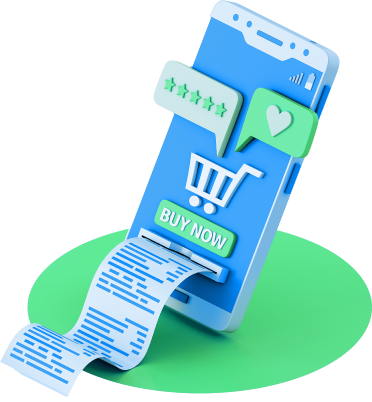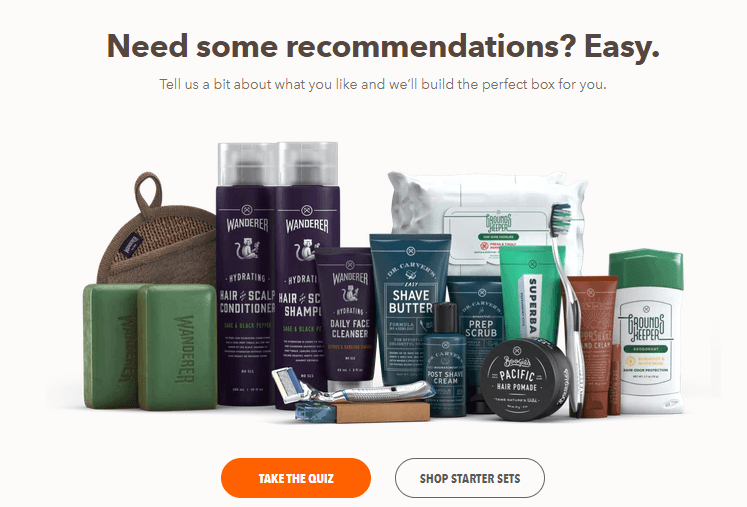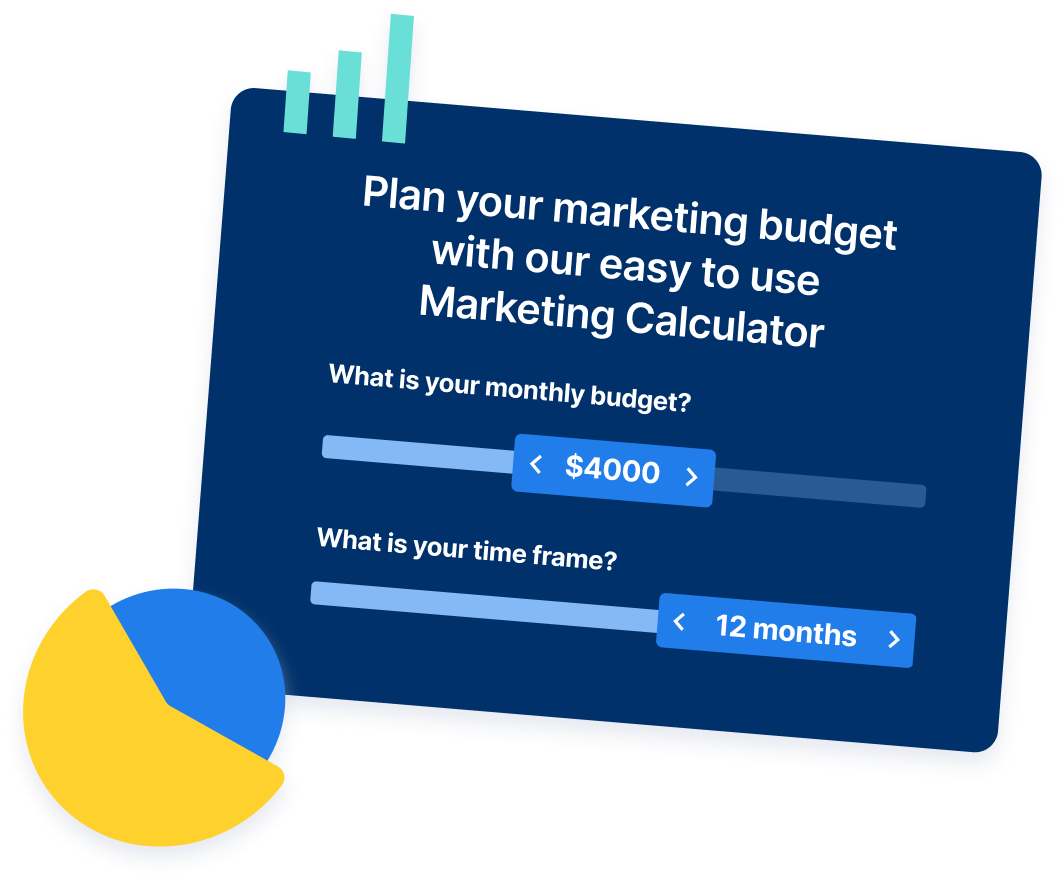-
 16 min. read
16 min. read
-
 Macy Storm
Macy Storm Content Marketing Consultant
Content Marketing Consultant
- Macy is a content marketing consultant with over five years of experience creating content for dozens of industries including home services, recreation, and education. She’s written about every marketing topic under the sun, from SEO to AI to email marketing. Her work has been featured by Search Engine Journal, HubSpot, Entrepreneur, Clutch, and more. In her free time, Macy enjoys crafting, reading comic books, and walking her dog Daisy.
What is direct to consumer advertising?
Direct-to-consumer advertising is a marketing strategy where companies promote their products or services directly to potential customers, bypassing intermediaries, to create awareness and drive sales.
Are you tired of using a middleman to reach your customers? If so, you may want to consider switching your business to run on a direct-to-consumer (D2C) model. When you become a direct-to-consumer business, you need a matching marketing strategy to help you reach the right people.
So, what is direct to consumer marketing? On this page, we’ll cover important information like:
- What is direct to consumer advertising?
- Direct to consumer marketing channels
- Benefits and challenges of direct to consumer marketing
- Tips for getting started with your direct to consumer marketing strategy
Keep reading to learn more about D2C marketing and subscribe to Revenue Weekly to stay up to date on the latest tips and tricks for marketing your D2C company!
What is direct to consumer marketing?
Direct-to-consumer marketing involves selling and advertising directly to consumers, rather than using a middleman to sell your products. As a D2C company, you manufacture, market, and distribute your products on your own. This type of marketing enables you to focus solely on consumers and building strong relationships with them.
Direct to consumer marketing channels
Now that we answered the question, “what is direct to consumer advertising?”, let’s dive into the different channels you can use to market your business directly to consumers.
Search engine optimization (SEO)
People conduct searches every day, looking for the right products to suit their needs.
Search engine optimization (SEO) helps you appear in relevant searches and put your products in front of interested consumers.  SEO is the process of boosting your website’s ranking in the search results to help drive more relevant traffic and leads to your page. Since consumers use this medium to search directly for relevant businesses and products, it’s an excellent resource for direct-to-consumer businesses.
SEO is the process of boosting your website’s ranking in the search results to help drive more relevant traffic and leads to your page. Since consumers use this medium to search directly for relevant businesses and products, it’s an excellent resource for direct-to-consumer businesses.
So, how does SEO help you reach consumers directly?
It helps you appear in search for relevant keywords: With SEO, you’ll conduct keyword research to find terms related to your business, industry, and products. You’ll typically focus on long-tail keywords, like “king size mattress without box spring,” to help you reach the most qualified leads. These key terms are specific, so you know when a consumer searches it that they’re interested in what you offer.
It enables you to reach the right consumer directly and drive them to your site.
It helps you rank higher in search results: SEO helps you rank higher in search results through optimizing your listing — this higher ranking enables you to drive more traffic to your page. This strategy requires improvements to the user experience on your site so more leads will visit your page and spend time on it— leading to increased rankings. You’ll improve your site by optimizing site load time, making your site mobile-friendly, and more. These factors contribute to a better user experience, which gets consumers to engage on your page and leads to improved rankings.
SEO is one of the best direct-to-consumer marketing channels for reaching consumers that want your products. It helps you push more organic traffic to your site, which helps more new people discover your products. You can opt to invest in SEO services from an agency to launch your strategy or implement your strategy in-house.
Pay-per-click (PPC) advertising
PPC enables you to put your business at the top of the search results above organic listings.

These ads enable you to connect directly with more interested consumers. Considering 46% of page clicks go to the top three PPC ads, you can earn more clicks by running a PPC campaign and ranking above your competitors. When users click on a PPC ad, they’re taken to a landing page on your website, which presents them with an opportunity to buy the product or service in the ad.
PPC ads make it extremely easy for users to convert — if you design an effective landing page, of course. PPC is a valuable strategy for direct to consumer businesses because:
It helps you outrank your competition: PPC ads help you rank above your competitors in search results. Google determines placement based on your ad’s relevancy and your bid amount.
So, if your ad is more relevant than your competitors, you’ll rank above your competition. If you’re competing against more prominent companies, especially middleman companies like Target or Walmart, PPC provides you with the opportunity to outrank these competitors and drive more relevant leads to your site. Our PPC services leverage advanced targeting techniques to ensure your ads reach the most relevant audience, enhancing your chances of standing out in a crowded marketplace.
It helps you earn more sales: PPC advertising helps you increase sales for your direct-to-consumer business. Businesses make $2 for every $1 spent on PPC ads.
Not to mention, ad clickers are 50% more likely to convert than organic visitors. PPC ads help you put your products in front of relevant leads and get them to convert. You’ll increase your sales by reaching the right people at the right time and showcasing why your product is the best option.
Social media marketing and advertising
Social media marketing and advertising are two direct-to-consumer marketing channels that you need to invest in to help your business reach the right people. First, let’s look at social media marketing.
Social media marketing enables you to connect with prospects interested in your products. They can follow your business’s page, check out your website content, and engage with your brand via direct messaging, which helps you nurture your audience towards conversion. Social media advertising, on the other hand, focuses on reaching prospects that haven’t discovered your business yet and driving them to visit your page, check out your website, or purchase your products.
These ads also help you retarget people who showed an interest in your company previously. Advertising on social media enables you to put your business in front of relevant leads and get them to turn into conversions for your company. With both social media marketing and advertising, you can:
Find new leads for your business: Social media is an excellent place for your business to earn new leads.
Creating a social profile enables you to get your brand in front of more leads and get them to check out your business. With social media ads, you’ll help new leads discover your business and drive them to check out your brand. You reach leads that may not have found your brand otherwise.
It’s a great way to earn new prospects and turn them into sales for your company.
Build brand recognition that leads to conversions: Social media is a crucial source for building brand recognition. You can post content that reflects your brand and resonates with your audience. From blog posts to photos, you can showcase your brand throughout your social media profile.
When leads are more familiar with your business, they’re more likely to choose your company. Since they’re familiar with your brand, they feel more comfortable purchasing products from your company.
Email marketing
Email marketing is one of the best direct-to-consumer marketing channels for connecting with consumers. This strategy enables you to send messages directly to your audience’s inbox about your products and your business.
When you invest in email marketing, you can segment your audience into different groups to send them tailored content that appeals to their interests. With an email marketing campaign, you can market directly to consumers by:
Sending personalized content: Your audience has specific interests in your business. Not every consumer wants the same products, so it’s critical to cater to their interests to maximize sales for your business. Email marketing enables you to personalize your content so you can increase engagement and interest in your brand.
From adding a person’s name to tailoring their message to their interests, you have many opportunities to create a tailored experience for your subscribers.
Highlight specials and deals: Your audience loves an excellent sale, and email marketing creates a great opportunity for you to present that information to your audience. You can engage prospects by sending them relevant deals that are available online or at your physical storefront. Email marketing enables you to provide consumers with an incentive to engage with your business. It’s an excellent opportunity to market your products directly to these leads.
Partner with a team of ecommerce masters!
WebFX campaigns have delivered more than 14,936,451 ecommerce transactions in the last 5 years
Read the Case Studies

Benefits and challenges of direct to consumer marketing
You have an answer to “what is direct to consumer marketing,” and you know what channels you can use to market directly to consumers.
However, before you dive into this strategy, you must look at both the benefits and potential challenges of creating a direct-to-consumer marketing strategy.
Benefits of direct to consumer marketing
You can reap dozens of benefits by investing in a direct-to-consumer marketing strategy. Here are just a few highlights:
- You have control over your brand: Instead of relying on an intermediary to properly market your products, direct-to-consumer marketing channels give you immediate control of your products and brand. You determine how you market them and how you reach valued prospects.
- You get access to customer data: When you market your products through a middleman you don’t get perfectly accurate information about your customers. If you sell your products on your own, however, you get pure customer data that you can use to inform future campaigns and changes.
- You can build relationships with customers: Having a direct connection with your audience enables you to build relationships with customers. You can nurture these relationships and create life-long customers and brand ambassadors.
Challenges of direct to consumer marketing
When creating a direct-to-consumer marketing plan, there are a few challenges you may face. Let’s look at a few common challenges:
- Trouble keeping up with supply: A common problem with D2C companies is keeping enough products in stock to service customers. Having an ecommerce presence enables you to earn more sales, which can make it challenging to keep up with demand. Many D2C companies struggle to maintain product in stock, which can result in possible lost sales.
- Difficult to build brand trust (initially): When you use an intermediary to sell your products, it’s easier because people already trust that business (think Walmart, Target) and are more willing to buy. When you do D2C marketing, it’s more challenging to build trust with your audience because they don’t know your brand — it’s not impossible, though!
- Requires managing all aspects of your campaign: When you do D2C marketing, you must handle every channel and campaign you run. Unless you invest in direct to consumer marketing services, you’ll be left to manage your campaigns on your own, which can be overwhelming.
Best practices for direct to consumer marketing
Ready to dive in and build a great direct-to-consumer marketing strategy? Here are six tips to help you set your business up for success!
1. Establish your brand’s voice
One of the challenges we mentioned previously is that people may not be familiar with your brand. They are likely more trusting towards well-known businesses like Walmart and Target, but it’s important to remember that these brands had to build up brand familiarity too, so don’t feel discouraged! Instead, spend time establishing your brand voice.
Your brand voice is your company’s attitude and values. It’s the most critical component for building brand familiarity because people want to know who you are. When you establish your brand voice, answer questions like:
- Who are we?
- What does our business stand for?
- What’s our mission statement?
- What do we offer our customers?
- How can we change our customers’ lives?
Answering these questions will help you shape your brand’s voice so that your message resonates with your audience. Look at Casper as an example. When browsing through their site, you understand that their brand voice focuses on helping their customers get better sleep, delivering an easy shopping experience, and helping in their community.


2. Establish your audience
Next on our list of best practices for direct-to-consumer marketing is establishing your audience. If you want your business to be successful, you need to know who you’re targeting. Think of your typical customer.
You’ll want to establish necessary information like:
- Demographics
- Socioeconomic status
- Hobbies
- Interests
- Buying habits
- And more
This information will help you better understand your audience, so you can develop a marketing strategy that helps you reach those people better. If you have more than one type of customer, that’s okay! You can create multiple buyer personas to help you make different campaigns to appeal to those personas.
Buyer personas are fictional representations of real customers that enable you to know who to target.
3. Update your website
Your website is the key to a successful direct-to-consumer marketing strategy. It’s the heart of your marketing plan, so it’s fundamental that you have an updated website. In most cases, regardless of the direct to consumer marketing channels you use, the goal is to drive people back to your website.
When looking at your site, you’ll want to check that you have:
- A clean and modern design: Users won’t engage with a site that’s visually unappealing or disorganized. Make sure your website has a modern design that reflects your brand and is easy to browse to find information.
- Simple navigation: If users struggle to find information on your page, they will bounce quickly. Creating simple navigation that lays out your products and makes it easy for users to find information will help you keep leads on your site.

- Responsive design: You want your site to look great on all devices. With responsive design, you ensure that your website adapts to whatever device a user uses to browse your products.
Having an updated website will help you drive more leads to your page and improve the browsing experience on your page.
4. Get creative with your campaigns
A key component of your direct-to-consumer marketing strategy is creativity. When you’re trying to establish your brand and make your company stand out from the competition, you’ll need to take risks to stand out from the crowd. Dollar Shave Club is a prime example of getting creative with their marketing.
One of the first videos they created took a creative approach that was factual, silly, and a bit chaotic, but it worked. The video has over 26 million views and skyrocketed Dollar Shave Club’s sales. It was simple and generated a ton of buzz around their business.
So, as you can see, a little bit of creativity can go a long way in helping you generating buzz around your company and build brand recognition!
5. Build up reviews
Earning reviews is one of the most critical best practices for direct-to-consumer marketing. Reviews are a great way to help you build brand trust — which as we mentioned earlier, is critical to a successful marketing campaign. People rely on reviews to help them determine if your company is a good fit for their needs.
Searches for product reviews on mobile have grown over 35%, meaning that more people want to see how others experience your product before they purchase. To aid in this process, work on garnering reviews from your current customers. You can do this by following up with an email after customers purchase your products and asking them to share their experience.
These follow-up emails can help you garner more reviews, which allows new customers to gain valuable insight into your products. You can also use social media to ask people to review and rate your business to help you garner more feedback about your products.
6. Add features that make it easier for your audience to buy
The user experience is a critical component of earning sales. If you want to build a successful direct-to-consumer marketing strategy, you must focus on adding features that help your consumers. You want to make it easy for your audience to browse and shop for your products.
For example, Warby Parker offers free try-on for their glasses. To find frames to try on, they offer a quiz that allows users to explore frames that fit their interests.  This quiz is a great feature for helping shoppers find the right product for them.
This quiz is a great feature for helping shoppers find the right product for them.
It’s user-friendly and easy to fill out. Dollar Shave Club offers a similar feature. To find the best shaving products for their consumers’ needs, they offer a quiz that helps users discover the right products.
 When you’re developing your direct-to-consumer marketing strategy, don’t forget to add elements that make it easier for your audience to buy your products. Whether it’s a quiz, free trial, or comparison charts, you can provide your audience with a better experience and encourage them to buy.
When you’re developing your direct-to-consumer marketing strategy, don’t forget to add elements that make it easier for your audience to buy your products. Whether it’s a quiz, free trial, or comparison charts, you can provide your audience with a better experience and encourage them to buy.
7. Personalize the experience
Lastly, if you want to drive success with your direct-to-consumer marketing strategy, focus on personalizing the experience for your audience. You’re competing with dozens of businesses for your audience’s attention. If you want to capture their attention, you must personalize their experience.
You can personalize their experience by:
- Using their first name in email subject lines
- Creating personalized, targeted ads
- Adding features, like quizzes, to personalize results
- And more
Personalization goes a long way in getting leads to interact with your business. If you deliver an experience that’s precisely what they want, they’re more likely to engage with your business and eventually buy your products.
Build your direct to consumer marketing strategy today
Instead of asking “what’s direct to consumer advertising,” you’re now asking, “where do I start with my D2C marketing strategy?” As you can see, there are numerous channels you can invest in and many best practices for running a successful campaign. It can feel overwhelming to figure out where to start.
Luckily, at WebFX, we offer direct-to-consumer marketing services that help you build a rock-solid strategy that enables you to earn more leads and increase revenue. Just check out our real results for proof! Give us a call today at 888-601-5359 or contact us online to speak with a strategist about how we can help you start marketing to consumers today!
-
 Macy is a content marketing consultant with over five years of experience creating content for dozens of industries including home services, recreation, and education. She’s written about every marketing topic under the sun, from SEO to AI to email marketing. Her work has been featured by Search Engine Journal, HubSpot, Entrepreneur, Clutch, and more. In her free time, Macy enjoys crafting, reading comic books, and walking her dog Daisy.
Macy is a content marketing consultant with over five years of experience creating content for dozens of industries including home services, recreation, and education. She’s written about every marketing topic under the sun, from SEO to AI to email marketing. Her work has been featured by Search Engine Journal, HubSpot, Entrepreneur, Clutch, and more. In her free time, Macy enjoys crafting, reading comic books, and walking her dog Daisy. -

WebFX is a full-service marketing agency with 1,100+ client reviews and a 4.9-star rating on Clutch! Find out how our expert team and revenue-accelerating tech can drive results for you! Learn more
Try our free Marketing Calculator
Craft a tailored online marketing strategy! Utilize our free Internet marketing calculator for a custom plan based on your location, reach, timeframe, and budget.
Plan Your Marketing Budget

Proven Marketing Strategies

Proven Marketing Strategies
Try our free Marketing Calculator
Craft a tailored online marketing strategy! Utilize our free Internet marketing calculator for a custom plan based on your location, reach, timeframe, and budget.
Plan Your Marketing Budget




